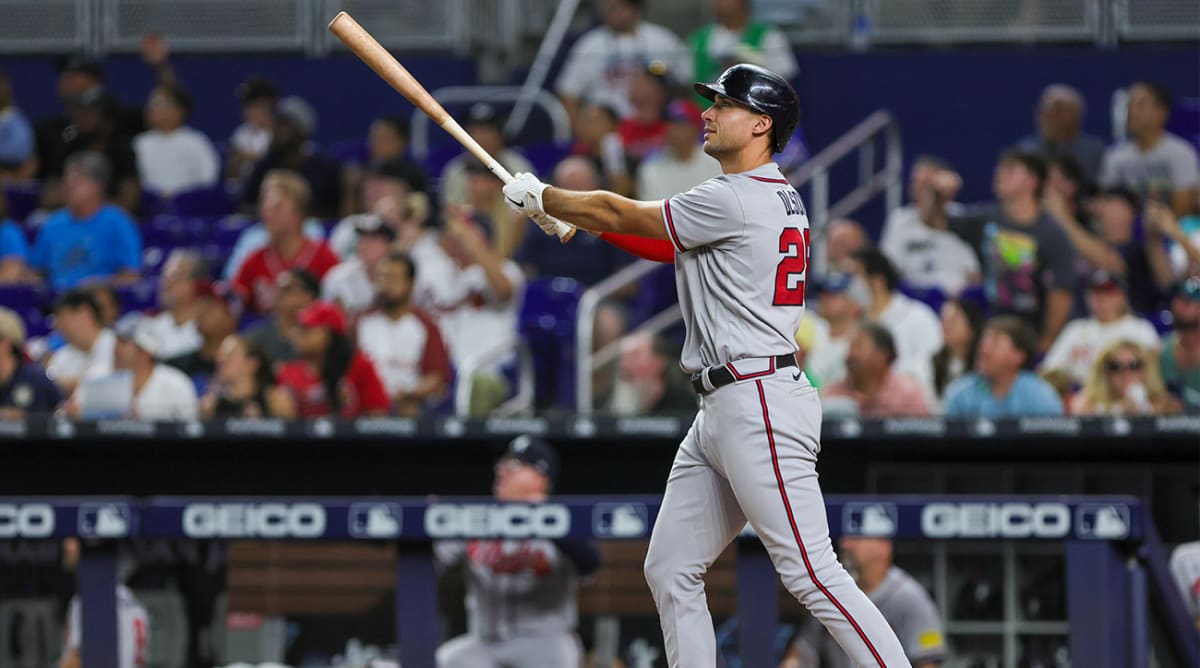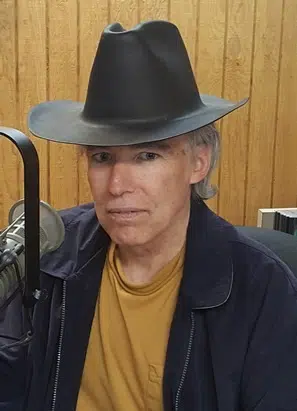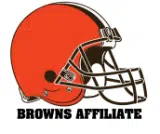In late June, as Atlanta first baseman Matt Olson slogged through what qualified as a slump for him this year, he glanced at his numbers. He ignored that he flirted with the major league lead in home runs (25 by June 25) and RBIs (60). The number that caught his attention was his strikeout total: already nearly 100.
“It was too early for my liking,” he says now, seated in the visitors’ dugout at Citizens Bank Park, gazing at outfield bleachers in which he’d deposited three dingers in the last two days to extend his lead in the home run race, now 52. Olson, 29, has this year been the most fearsome slugger in the sport. But he wants to be a hitter first.

Sam Navarro/USA TODAY Sports
Since the start of 2018, no other player has hit more homers than Olson, first for the A’s and, since last spring’s Oakland fire sale, for Atlanta. He’s also been seventh in whiffs over that span. “I’ve always had a lot of strikeouts,” he says. “I understand that it’s a little bit of give and take [for] guys who drive the ball. But I don’t think that they have to go hand in hand together.”
Olson finished June with 102 punchouts in 81 games. In the 70 games since, he has whiffed 56 times. He will almost certainly receive National League MVP votes this offseason. “People have been asking me, ‘What’s different?’” he says. “It’s not like I made some earth-shattering adjustment.”
Actually, what it came down to was trying not to shatter the earth. “I was taking a lot of hard swings,” he says. “I was off-balance in the box a lot more than I should be. And I remember making a conscious effort to kind of dial that back a little bit and try to be more controlled. . . . Just dial the effort back a little bit. Even if it’s just put a ball in play that should be put in play, whether it’s hit 115 [mph] or 85. I think that thought process got me a little more accurate with the barrel, and I’m hitting more balls hard because of it.” He compares the idea to that of a pitcher who sacrifices a bit of velocity to improve his command.
“All he’s got to do is just be on time and touch it,” says hitting coach Kevin Seitzer. “He doesn’t have to generate in order to crush it.”
Matt Olson's record-breaking home run.
No. 52 to pass @andruwjones25 in the @Braves record books. pic.twitter.com/rg5v3jGKEl
— Bally Sports: Braves (@BravesOnBally) September 16, 2023
Olson says, “I can probably count on one hand the number of times in my life I’ve gone to the plate and tried to hit a home run and actually done it. That’s just not how it works, especially for me. I’ve got really long levers, long arms. I have a tendency to have a long swing when I try to do too much. I put myself in a place where you can get exposed when I’m trying to do too much.”
That was the problem last year—although plenty of hitters would have been happy with Olson’s .802 OPS. But he never quite felt right, and any time he thought he had locked in his swing, the comfort disappeared. He can acknowledge now that the upheaval played a role. He grew up 30 miles east of Truist Park, in Lilburn, Ga., idolizing Atlanta stars such as Jeff Francoeur (whose mother, Karen, coincidentally taught math to a sixth-grade Matt). So Olson and his wife, Nicole, were thrilled when the trade brought them home; within 10 hours of the swap, he had agreed to an eight-year, $168 million extension.
But Olson thrives on consistency: He is the active iron man, with 446 consecutive games played, and he has acted the same before, during and after just about every one of them. “When I think of a big leaguer, I think of Matt Olson,” says Atlanta righty Spencer Strider. So the change was tough. Olson wasn’t sure which terms his new team used. He wasn’t sure which fields were which at spring training. He wasn’t sure how to be the same guy he had always been.
“Coming over to a new team for the first time, coming home, he wouldn’t admit that he was putting extra pressure on himself, but . . . he’s a human,” says Seitzer.
As promised, Olson at first insists, “I don’t think I was putting a lot of pressure on myself.” Then he thinks about it. “It’s not like I was showing up to the yard and being like, I gotta do this today,” he says. “Do I think there might have been an element of wanting to—you’re in a new place and you want to, I guess, prove yourself? This is subconsciously happening. I think there was a little bit.” He grins. “It’s a natural thing for me to want to do, but baseball isn’t a game where more effort translates to more results.” Indeed, in Olson’s case, it was just the opposite.

















